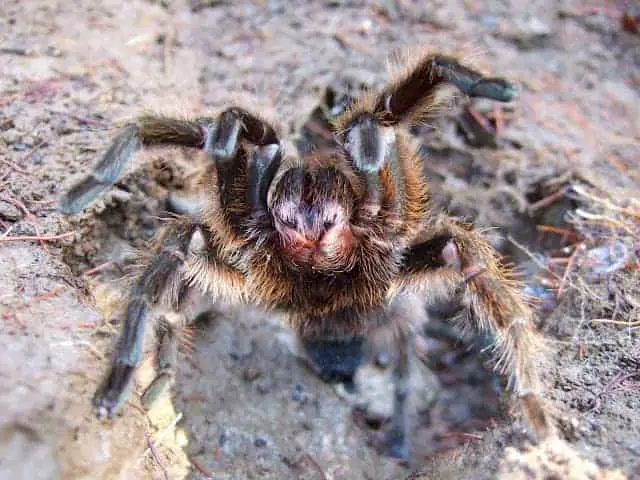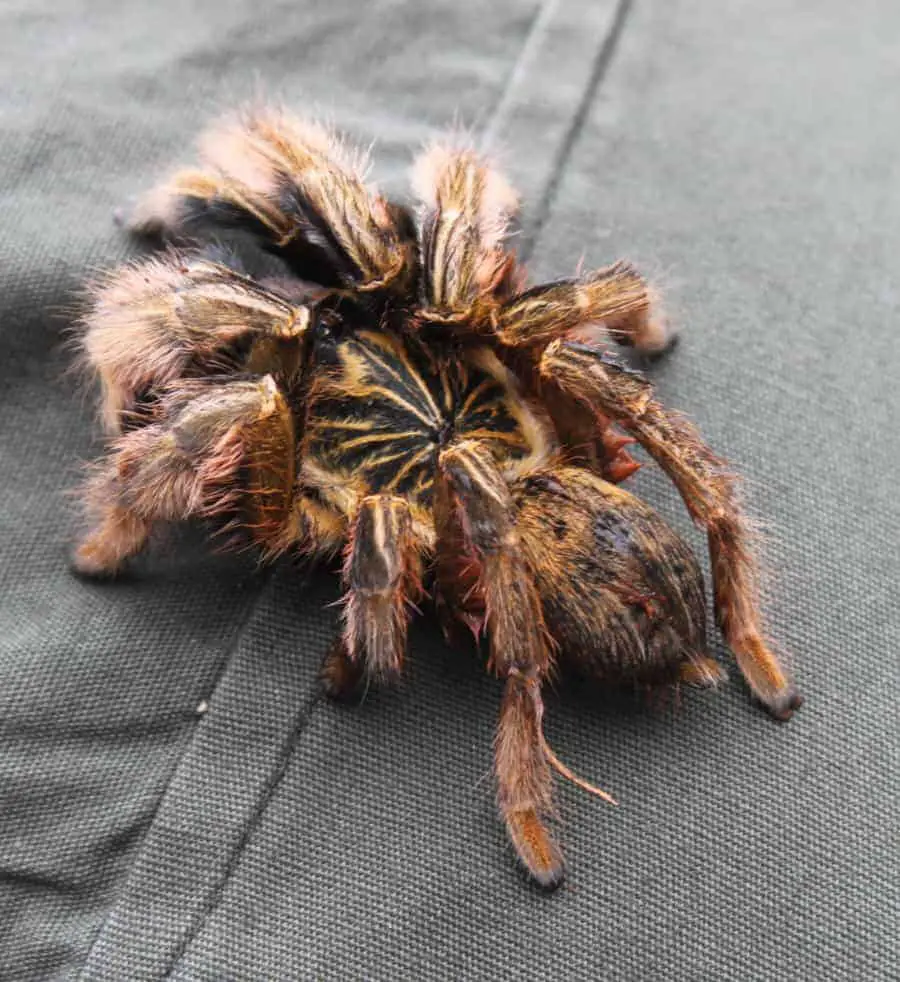A Tarantula is a hairy, long-legged, long-lived spider found mostly in warm regions. Also sometimes known as Bird Spiders or Monkey Spiders, true Tarantulas make up the family Theraphosidae; related forms, including Funnel-web Spiders and Trap door Spiders, are also sometimes grouped as Tarantulas. Many species are about 2.5 to 7.5 cm (1 to 3 in) long, with a 13-cm (5-in) leg span, but some South American species are larger. Tarantulas inject a paralysing venom into prey with their large fangs. The bite is severely painful and often requires hospitalisation and pain killers. Ornamental Tarantulas (Poecilotheria) like the Fringed Ornamental from Sri Lanka, are very fast and their bites are fairly toxic.
The term “Tarantula” refers to about 300 species of spiders some of which can weigh 2 to 3ounces and have a 10-inch leg span. Most Tarantulas are sluggish, and will not bite unless provoked. However, the bites of Tarantulas can be quite painful since the fangs are large and can pierce the skin of the victim.

Many Tarantulas have a dense covering of stinging hairs on the abdomen to protect them from enemies. These hairs can cause skin irritation for humans.
Tarantulas usually live in burrows in the ground. These burrows may be dug by the spider or abandoned by rodents. The tunnels are lined with silk and form a webbed rim at the entrance that conceals it.
The females deposit 500 to 1000 eggs in a silken egg sac and guard it for 6 to 7 weeks. The young spiders remain in the burrow for some time after hatching and then disperse by crawling in all directions. Tarantulas do not occur in colonies because they do eat each other.
Tarantulas may live for many years. Most species require 10 years to mature to adults. Females kept in captivity have been known to live more than 25 years and have survived on water alone for 2 1/2 years. Females continue to moult after reaching maturity and, therefore, are able to regenerate lost legs. Males live for only one year or less after maturity. A tarantula can be kept as a house pet. A terrarium (an empty aquarium) with a sandy bottom provides an ideal habitat. Tarantulas can be fed live crickets or other insects. When adequately provoked, Tarantulas will bite and their formidable fangs can produce painful puncture wounds. There is another route of envenomation by the tarantula – urticating hairs located on the abdomen serve as a deterrent to predators. These are hairs that cause itching and burning.
Signs & Symptoms of Envenomation: Bites are unlikely to cause problems other than pain at the site. Skin exposure to the urticating hairs will cause itching and a rash.
First Aid: Clean the bite site with soap and water and protect against infection. Skin exposures to the urticating hairs are managed by removing the hairs with tape.
Click here for more photos of Tarantulas

Information and pictures were taken from children’s projects and where credited to that child does not claim to be original information. Where possible, permission to reproduce has been sought. Any infringement of copyright is purely unintentional.

